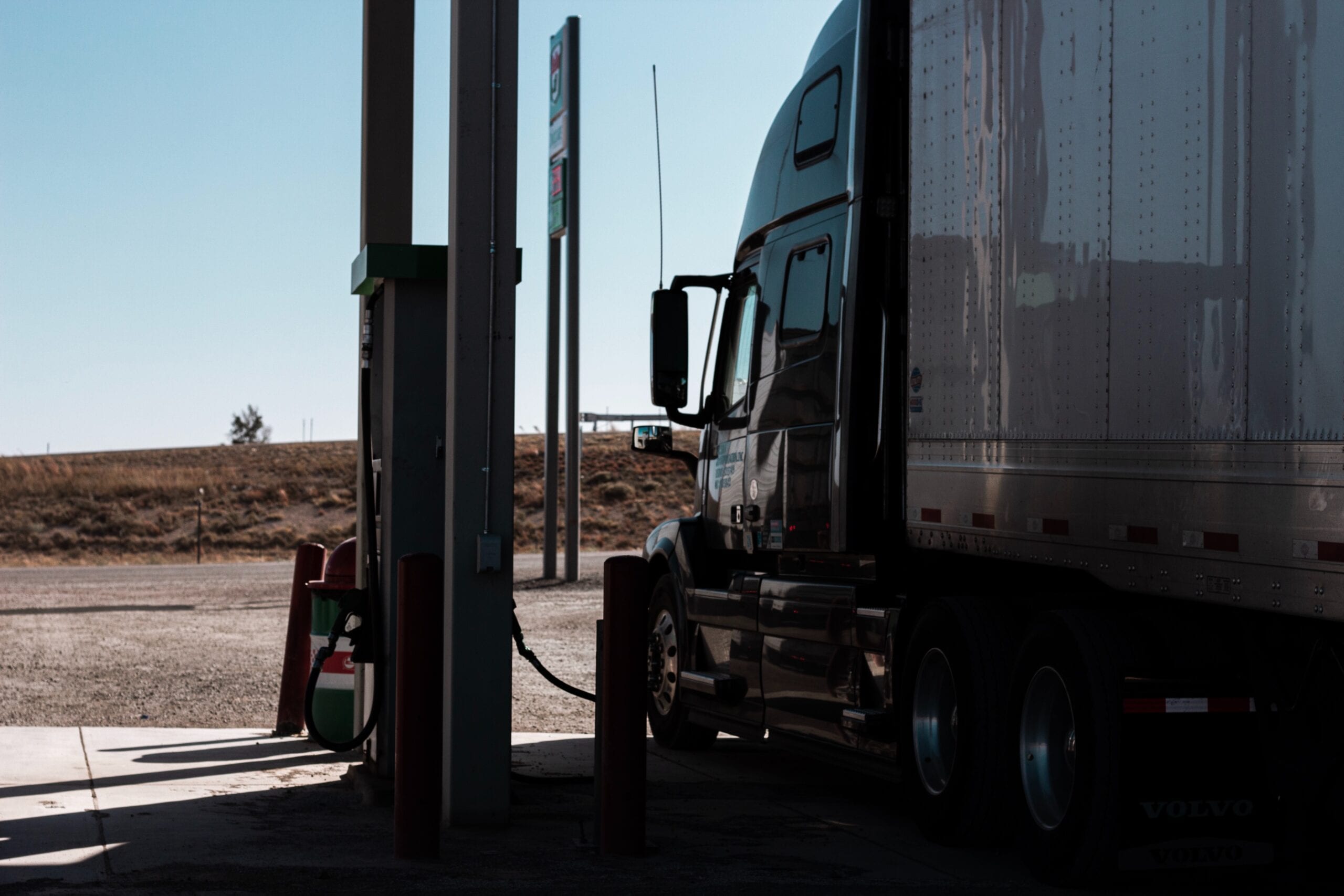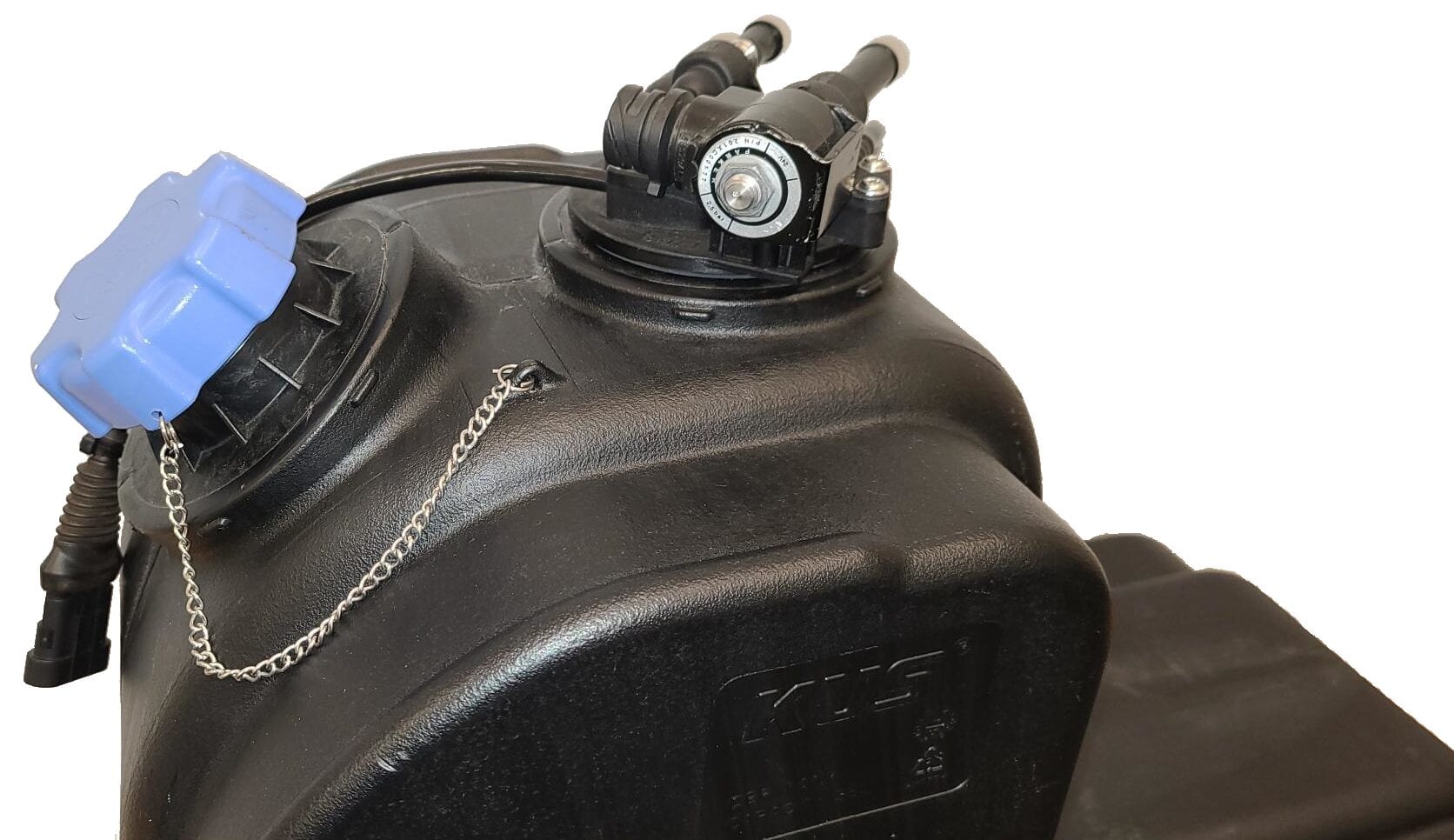
Diesel exhaust fluid, more commonly known as DEF, is a chemical compound used to neutralize harmful pollutants in diesel exhaust. While using DEF is a straightforward process, it’s important to follow the correct guidelines when using these chemicals. Here’s what you need to know about how DEF works, as well as how to properly store and use DEF.
What Is Diesel Exhaust Fluid (DEF)?
The purpose of DEF is to neutralize nitric oxide and nitrogen dioxide in diesel fuel exhaust. These compounds, together known as NOx, are toxic to humans. Additionally, NOx contributes to greenhouse gasses that cause climate change and acid rain, further emphasizing the importance of breaking down these pollutants in an effective way.
DEF consists of 32.5% urea and 67.5% deionized water. Its use in the selective catalytic reduction (SCR) system of a diesel engine helps break down harmful NOx particles. When injected into the system, DEF reacts with NOx to convert it into nitrogen, water, and small amounts of carbon dioxide. This reduces harmful emissions and increases fuel efficiency.
In 2010, the EPA rolled out lower NOx emissions standards, which led vehicle manufacturers to install DEF systems in medium and heavy-duty vehicles. In the years since, the EPA has also expanded these measures to include off-road vehicles, generators, and various engines. These regulations resulted in historically low levels of NOx during a period when nitrous oxide levels were peaking.
Using and Refilling DEF

DEF is stored in a special tank most commonly made from a corrosion-resistant, high-strength plastic. The vehicle operator most often uses a nozzle to add the product into the vehicle. Common refilling methods include: a nozzle attached to a DEF jug or a pump at a refill station. If your DEF jug doesn’t include a nozzle, as is the case with smaller DEF jugs, a funnel should be used to ensure DEF goes into the tank without spillage.
How to Fill a DEF Tank
First, place the nozzle inside of the filler neck on the DEF tank. Slowly tilt the DEF jug, allowing a controlled flow of DEF into the tank. Due to the corrosive nature of DEF, you should avoid spilling DEF on other vehicle components. Spilled DEF should be removed from contaminated surfaces as soon as possible.
Do Not Overfill a DEF Tank
You should not fill a DEF tank higher than the max recommended level. This is because overfilling the tank could damage it. If you overfill the DEF tank, there won’t be enough space for expansion when DEF freezes. This can lead to potential cracking of the tank (and leaks).
Avoid Contaminating DEF
While adding DEF into a DEF tank, it’s important to ensure no outside contaminants or debris fall into the DEF tank. Not all DEF tanks have a filler neck filter to catch debris or contamination, so it’s important to pay close attention when refilling. Debris entering the tank can cause blockages in the system. If this occurs, your system may not be able to inject DEF into your exhaust.
Liquid contamination, such as additional water, fuel, or coolant can affect the quality of the DEF and can damage your emissions system. Fortunately, many DEF sending units have a quality sensor that can detect contamination or urea concentration changes.
Temperature and Quality Sensors on DEF Sending Units
The DEF sending unit has two parts, the temperature sensor and the quality sensor. These two sensors are responsible for accurately monitoring conditions within the DEF tank.
DEF Temperature Sensors
The DEF sending unit has a temperature sensor that alerts operators when the DEF tank temperature reaches a critical level. The optimal storage temperature for DEF is 77 degrees Fahrenheit. However, DEF tanks do allow some expansion if the contents of the tank freeze. In cold conditions, DEF tank sensors will alert you of the temperature change before freezing occurs.
DEF Quality Sensors
The DEF sending unit has a quality sensor that accurately measures the concentration and quality of the DEF in the DEF tank. These sensors can also detect contaminants within the tank. If there is any deviation in the concentration of DEF that could potentially harm the vehicle and SCR system, the DEF quality sensor will alert the driver. There are several quality sensors to choose from depending on your application solution and climate.
KUS Quality Sensors
By engineering, designing, and validating DEF tanks and level sensors simultaneously, KUS provides customers with comprehensive DEF accessories that are always compatible with each other. That’s the KUS guarantee.
To learn more about our DEF tank temperature sensors, check out our selection here.
DEF Tank Assemblies

DEF tanks play a critical role in the storage of DEF. Produced through a blow molding or rotational molding process and made out of HDPE material, DEF tanks store DEF prior to use. DEF tanks must accommodate potentially harsh environments and incorporate safety measures. The DEF tank is typically adjacent to the diesel tank, but in some vehicles you’ll find it under the hood. DEF tanks feature light blue DEF tank caps. Your vehicle’s handbook should cover the usage of DEF as it pertains to adding DEF into the DEF tank. Additionally, it should also have a section regarding DEF safety and proper uses of the product to ensure the DEF performs as intended.
KUS designs, engineers, and manufactures DEF Tank Assemblies not only based on customer needs and requirements, but also according to strict ISO 22201 standards. In addition to standard DEF tanks, we can also produce custom DEF tanks built to unique specifications.
Shop All Exhaust Aftertreatment Products at KUS
KUS provides a wide range of exhaust aftertreatment products to meet your needs. From DEF level senders to tank assemblies, our expert craftsmanship ensures quality products you can count on.
If you have any questions about our exhaust aftertreatment products or any of the other products available from our store, please contact us for more information. A member of our team will work with you to get your questions answered.
